

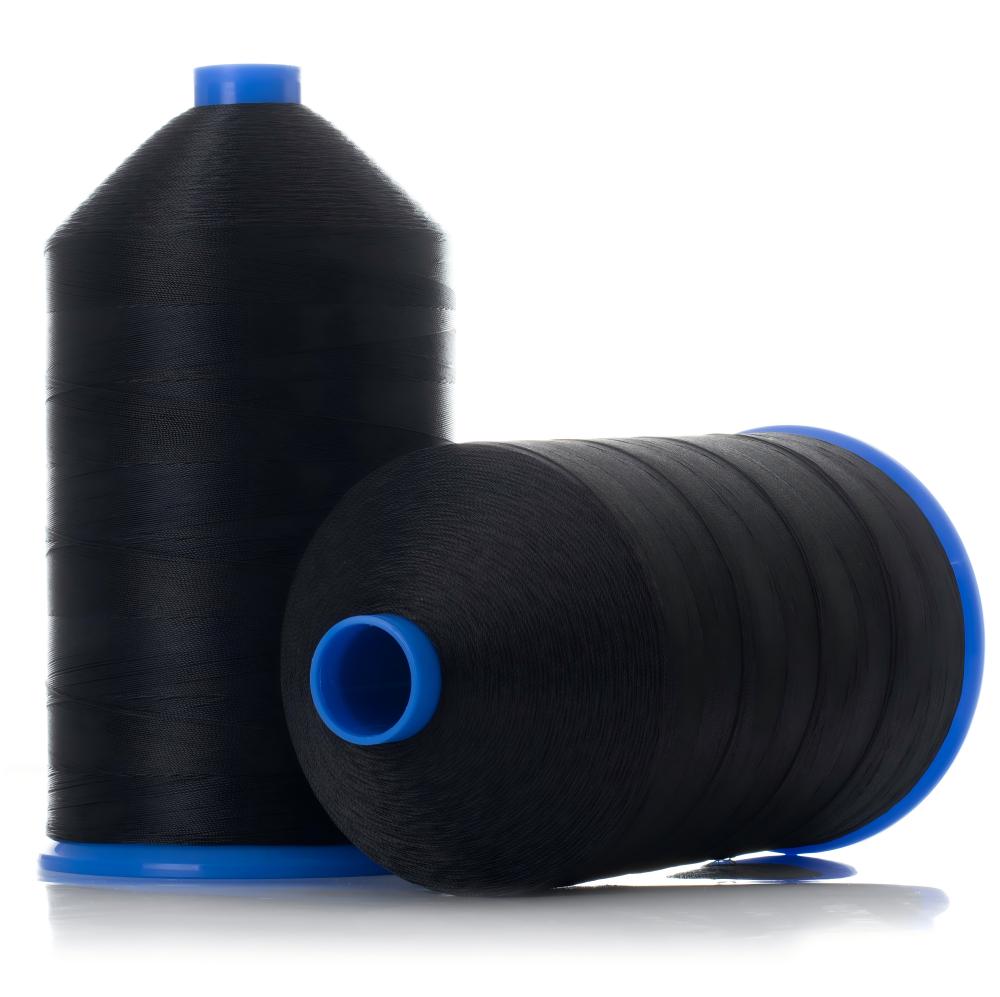
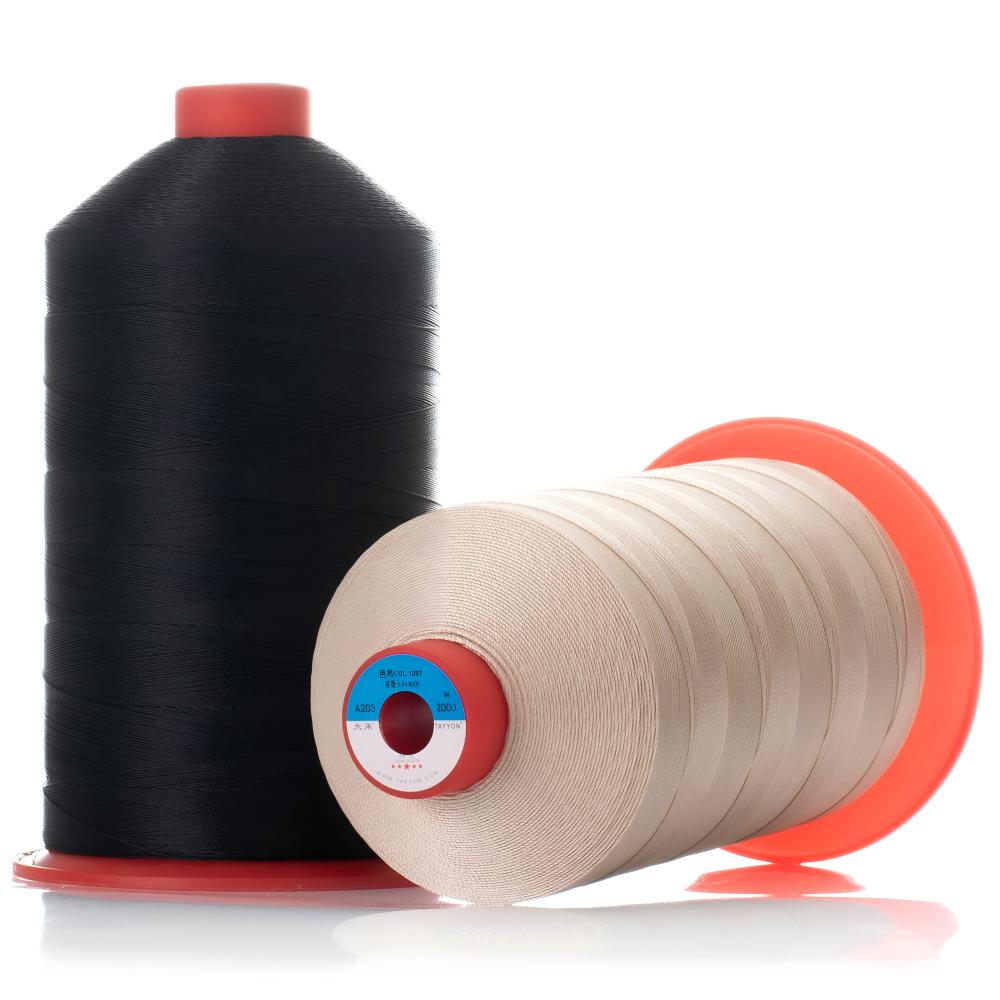
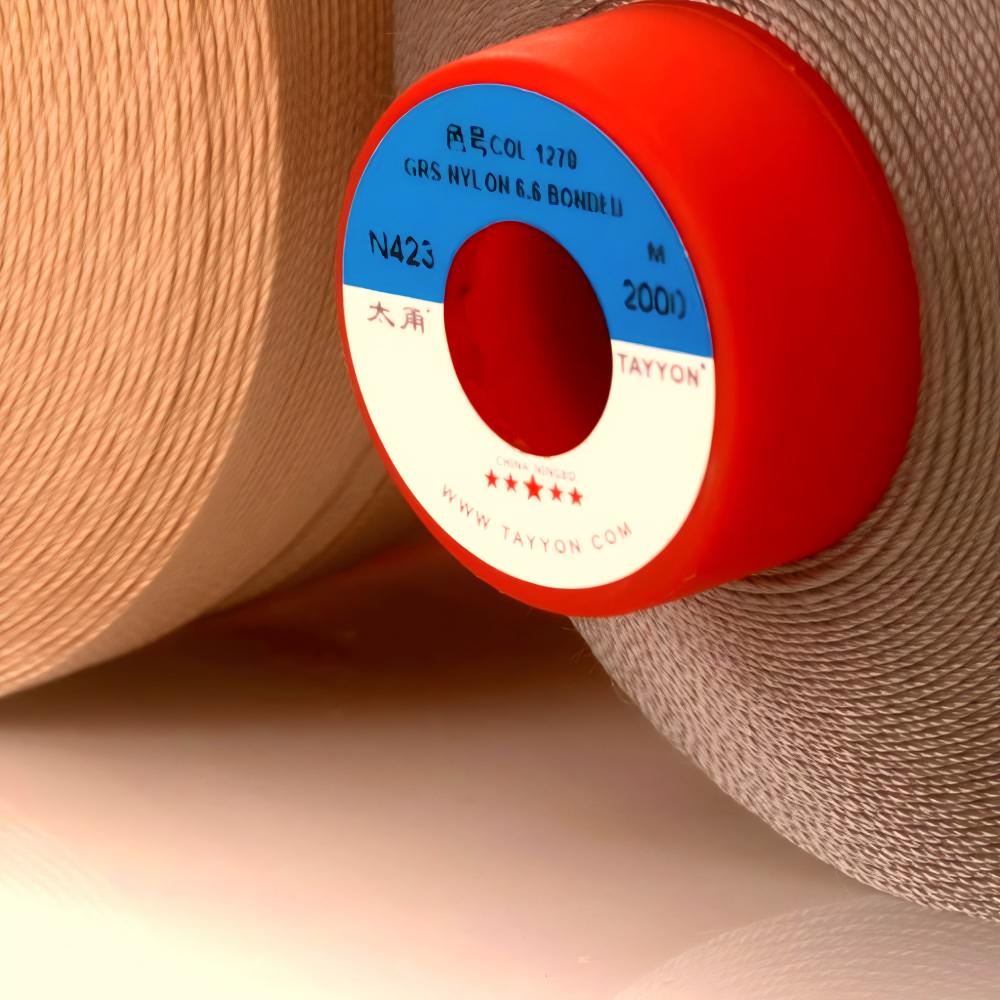
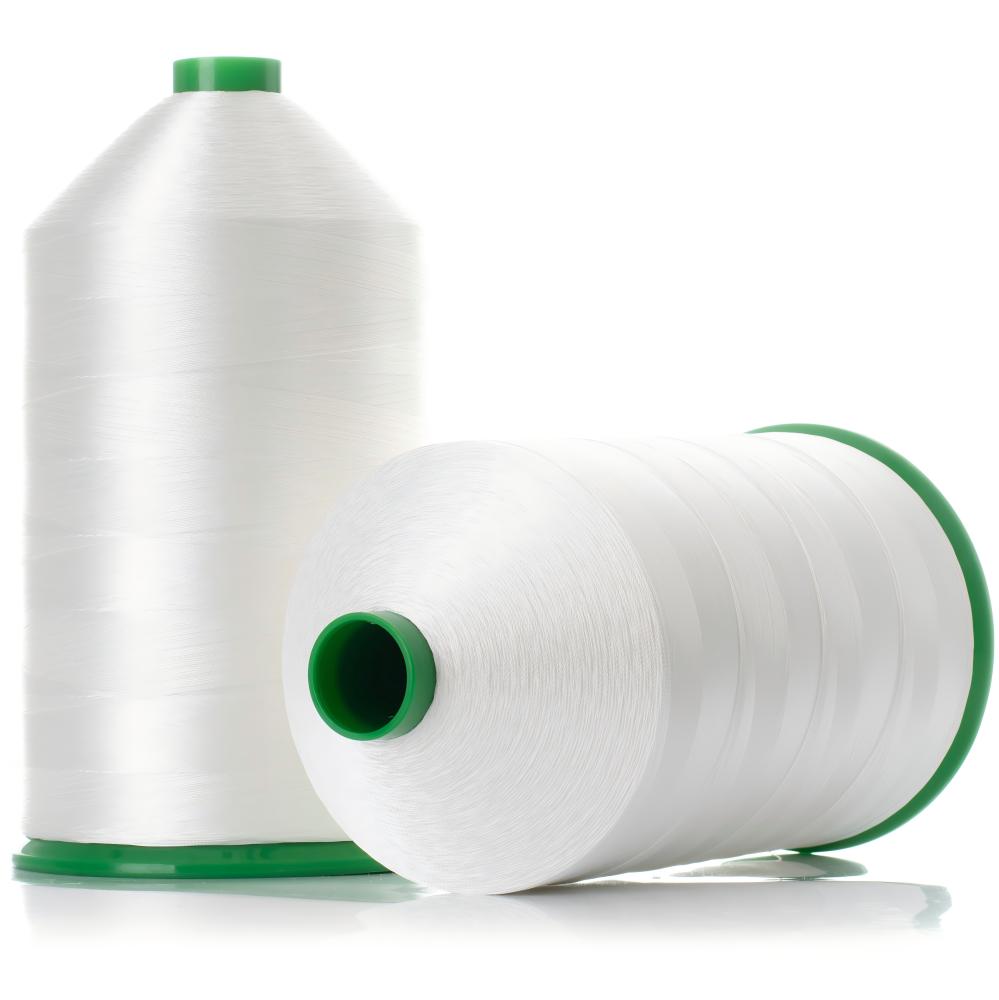
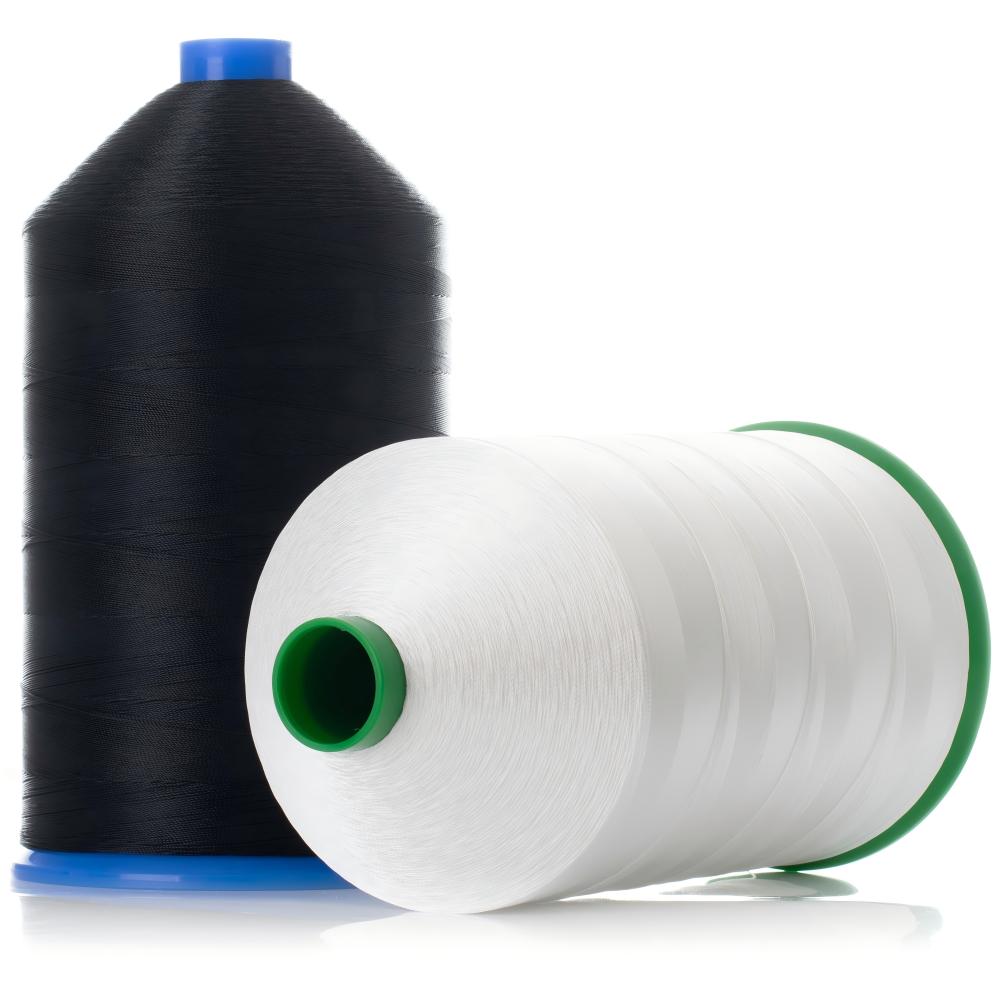
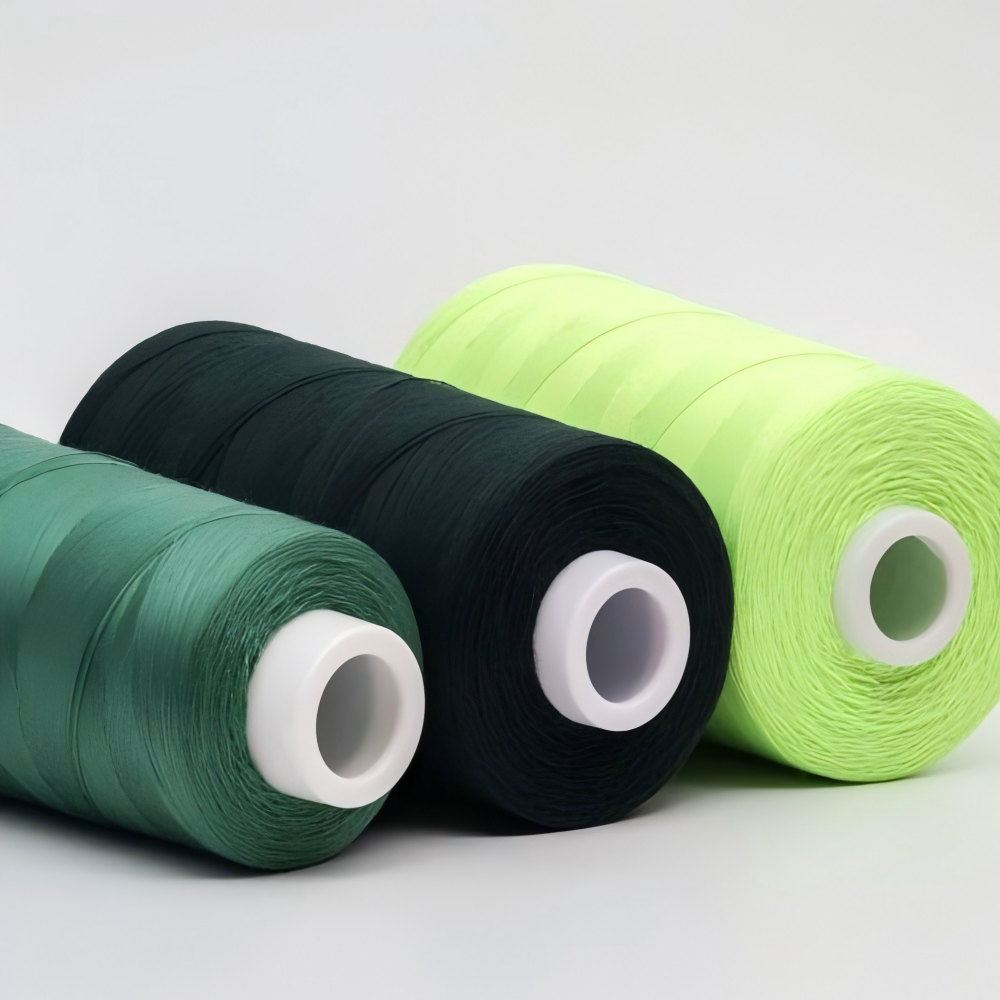
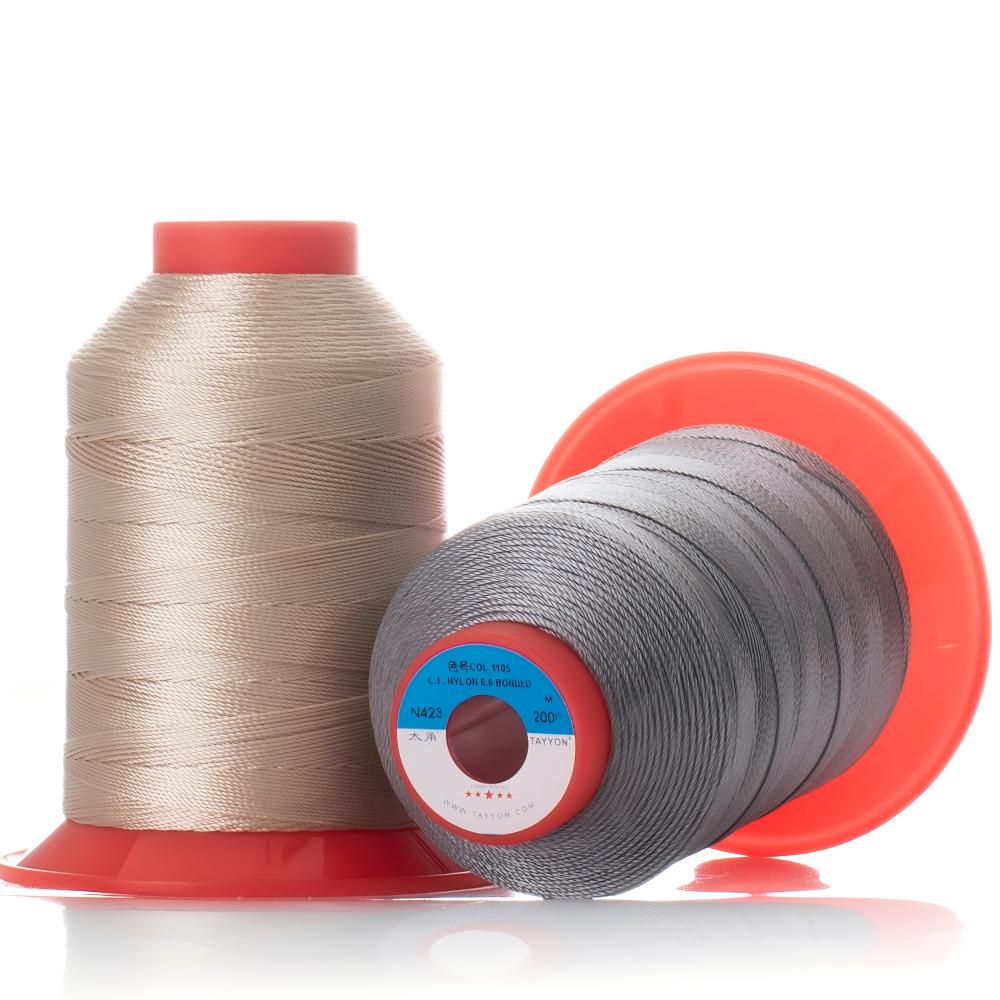
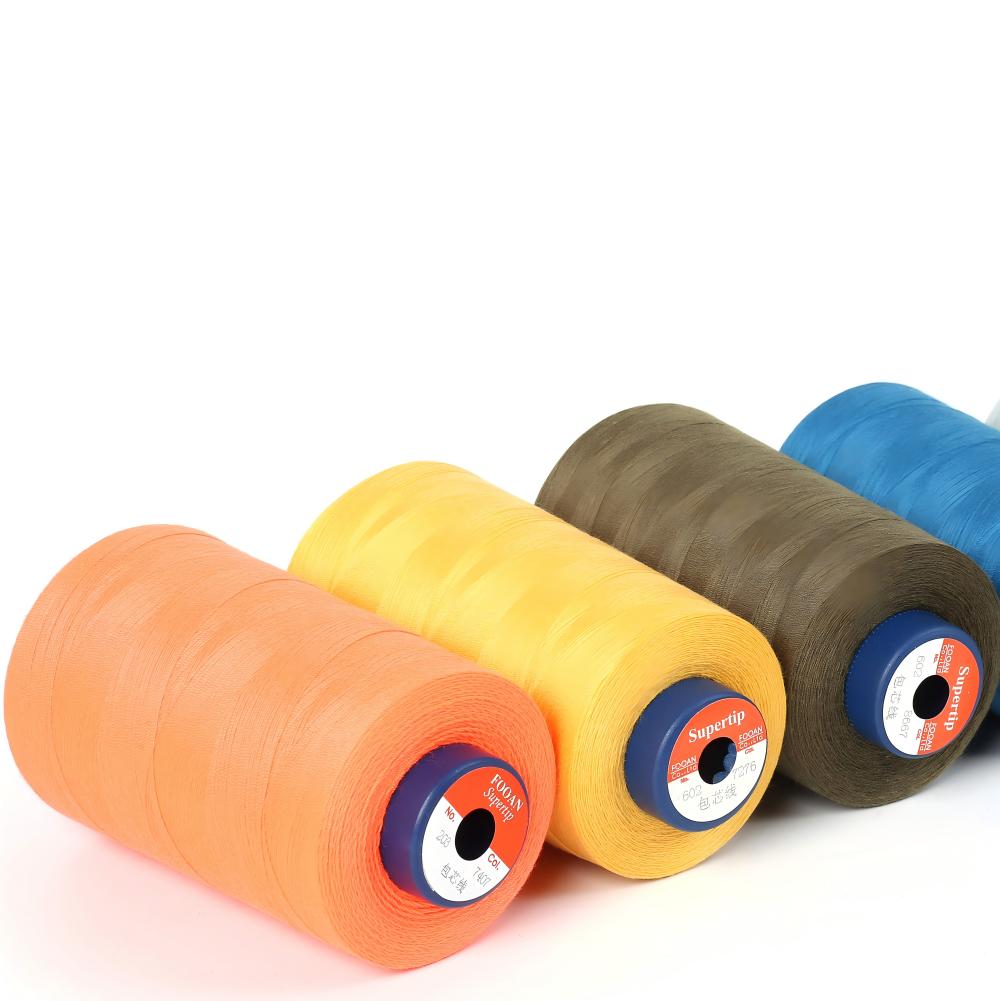
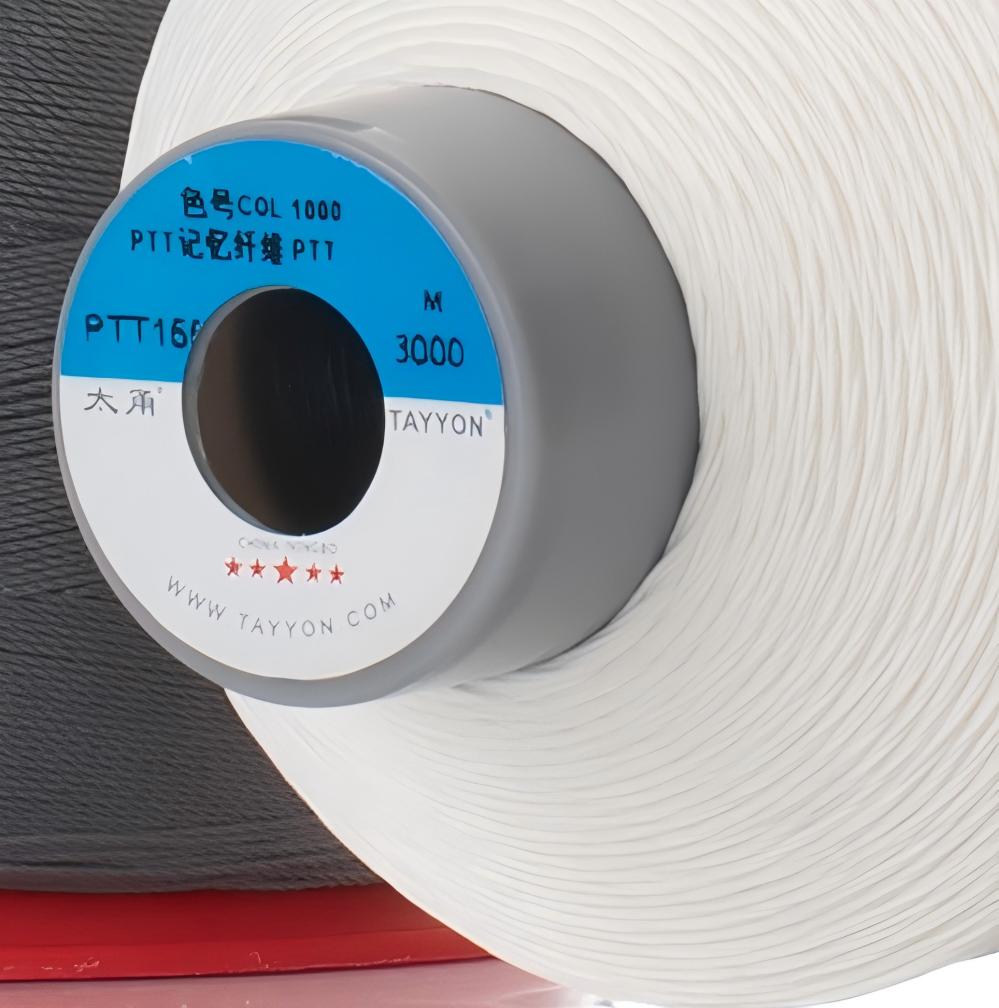
 Tel
Tel Email
EmailBonded Nylon 6.6 Sewing Thread - Why choose bonded threads
Release time:2025-03-15 Click:1409
The Core Advantages of Bonded Nylon 6.6 Thread and Why It Should Be Your Choice
Mechanism of Sewing Thread Stress:
During sewing, the needle drives the thread through the needle eye and into the fabric, where it interlocks with the bobbin thread to create stitches. The process of passing through the needle eye subjects the thread to direct compressive force. This compression most notably causes strand separation (due to untwisting from compression). Over time, accumulated strand separation leads to knotting, ultimately resulting in fraying or thread breakage.
Why Bonded Thread Resists Fraying:
Bonded Thread is designed to prevent strand separation. During the twisting process, a thermoplastic filament is integrated into the core of the thread. After twisting, the thread undergoes heat treatment and curing, which internally bonds the strands. This unique production method ensures Bonded Thread remains fray-resistant.
Single-Ply Advantage for Heavy-Duty Materials:
The key strength of Bonded Thread lies in its single-ply cohesion when passing through the needle eye. Since the strands are internally bonded, the thread resists untwisting, wrinkling, and fraying, drastically reducing the risk of breakage. This is why Bonded Thread is the mandatory choice for ultra-thick and rigid materials like ABS hard-shell luggage and heavy-duty reinforced belts.
![]() Bonded Nylon 66 Sewing Thread Bonded Polyamide 6.6 Sewing Thread
Bonded Nylon 66 Sewing Thread Bonded Polyamide 6.6 Sewing Thread
![]() Bonded Polyester Sewing Thread High Tenacity Filament
Bonded Polyester Sewing Thread High Tenacity Filament
Ningbo Tayyon Thread Co., Ltd.
 Beicun, Dongwu Town, Yinzhou District, Ningbo City, Zhejiang Province, China
Beicun, Dongwu Town, Yinzhou District, Ningbo City, Zhejiang Province, China
 Tel./Fax: 0086-574-88381625
Tel./Fax: 0086-574-88381625
 Email: info@tayyon.com
Email: info@tayyon.com